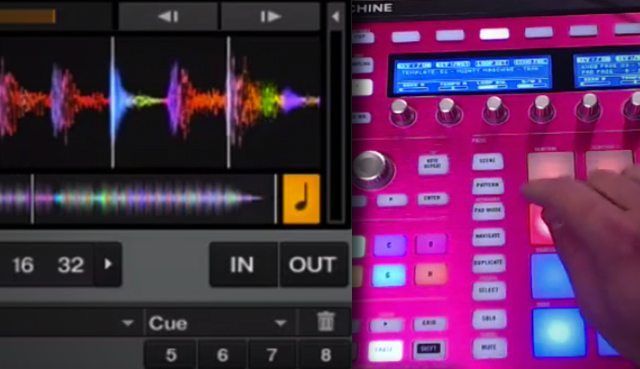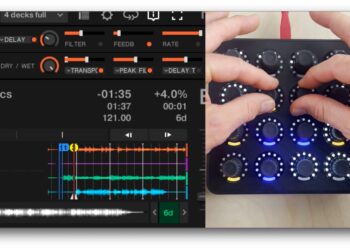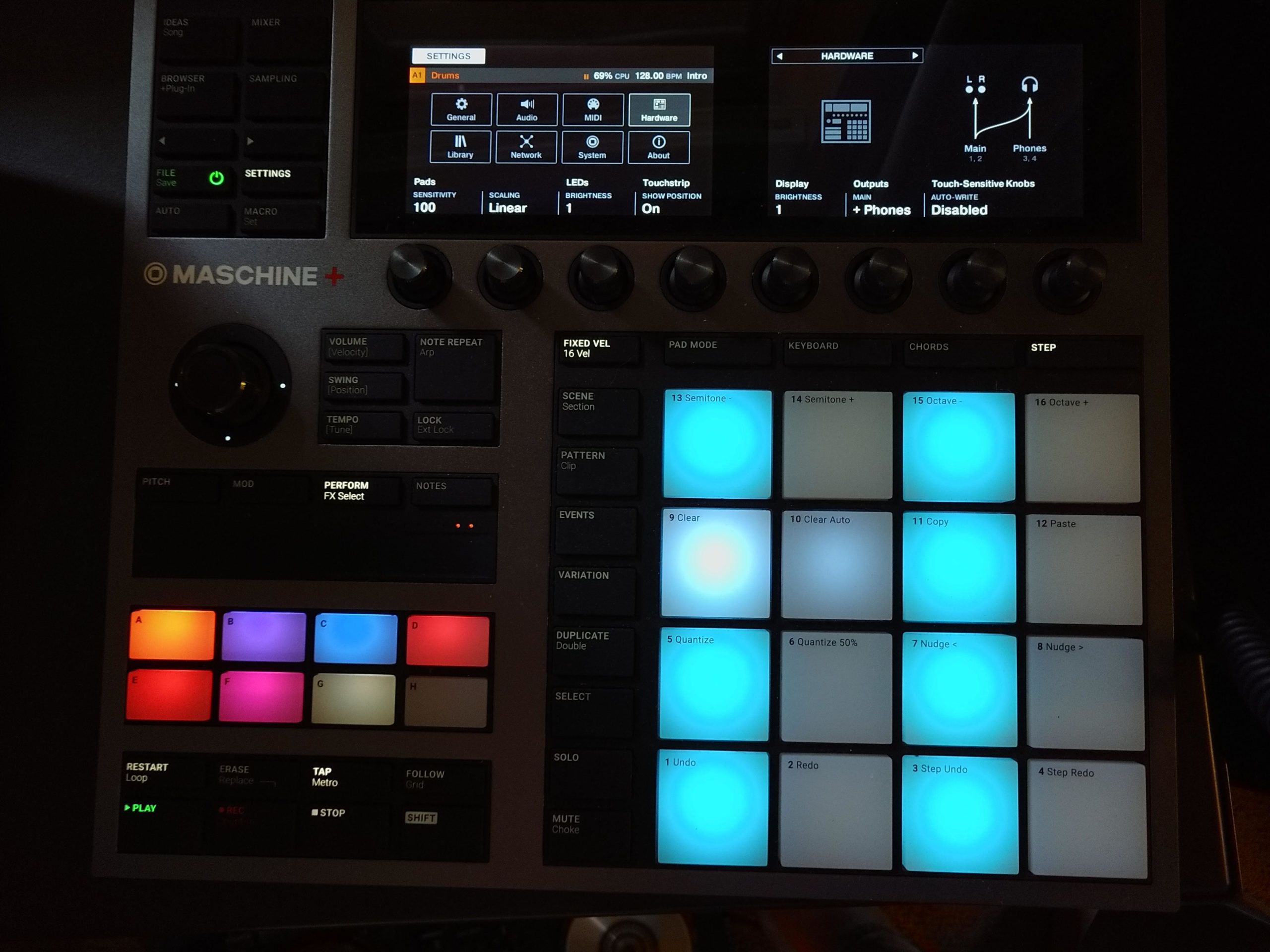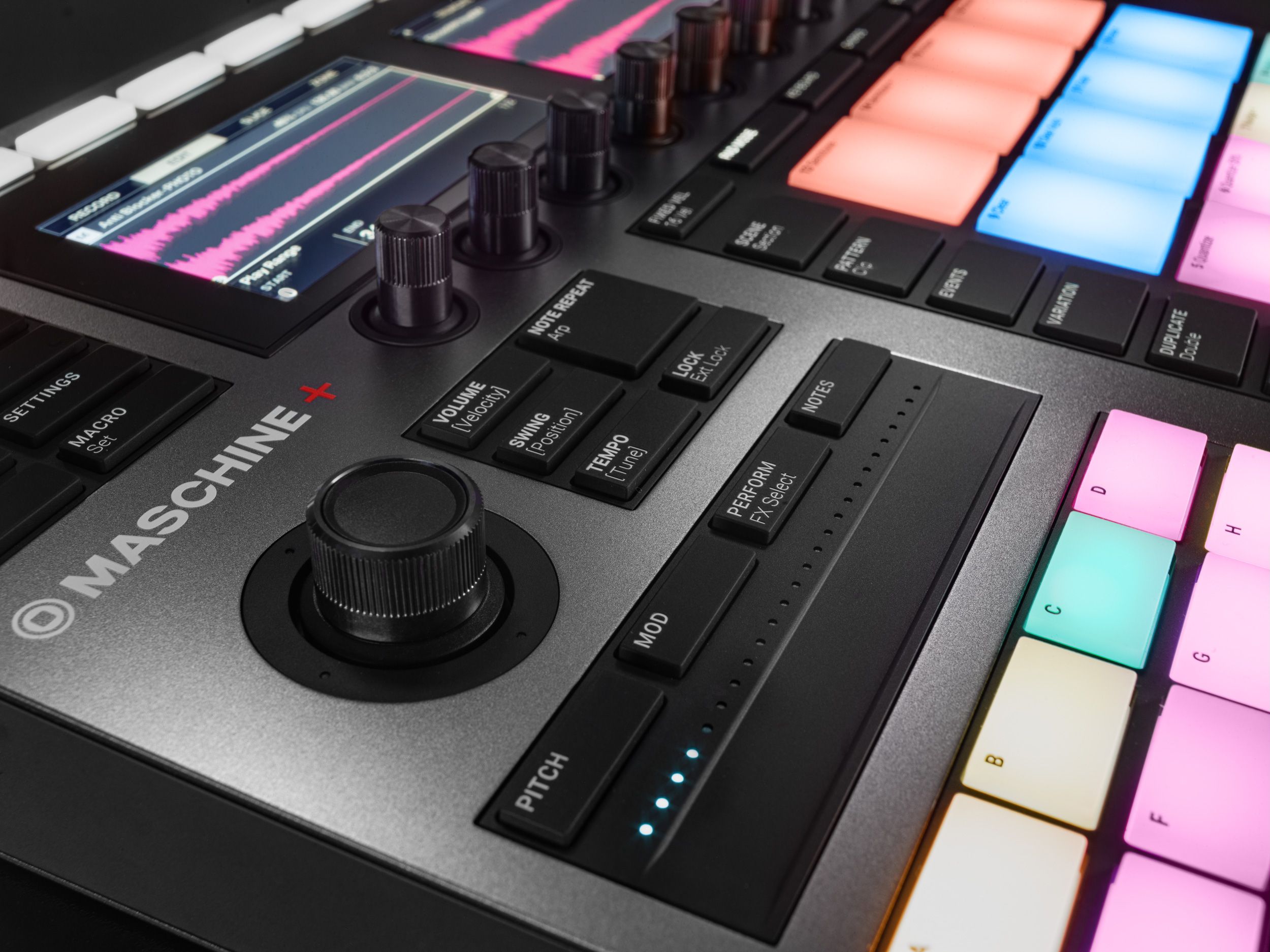Traktor DJ and Serato DJ/Itch have had a feature that’s been missing from Traktor Pro 2 for a while, the freeze mode (Traktor DJ) or Slicer (Serato DJ). But today that all changes. In typical DJTT fashion, we’re going to show you how you can map this yourself, using Maschine.
(*Note: Even though I’m using the MK2, this can be done with any Maschine model. This mapping could also be done with other velocity sensitive controllers such as the Livid Base)
What You Need To Make A Traktor Slicer:
WHAT DOES THE TRAKTOR SLICER DO?
The Slicer and Traktor DJ’s (iOS-only) Freeze Mode are functionally similar. For the purpose of simplicity we’ll refer to it as the Slicer. The Slicer was a very popular feature that was first introduced in Novation’s Twitch. As the track plays the slicer chops the track into 8 cue points across the pads on the controller.
The main difference between the slicer and using hot cues is that the slicer’s cue points are temporary. This feature has been implemented in several controllers recently for Serato DJ including the Pioneer DDJ controllers and the Numark NV. This allows for some really creative performances. For an in-depth demonstration and explanation i’d recommend checking out Chris’s video here.
VIDEO DEMO OF THE DJTT TRAKTOR SLICER
CUSTOMIZED SLICER
While Serato’s Slicer is a great feature, the downside is that it’s only supported on specific Serato hardware. Unlike Traktor, Serato doesn’t have a deep MIDI mapping system that allows DJs to create complex mappings that are unique to their performance style.
If you want a feature like the Slicer, you have to own the right hardware. Traktor’s MIDI mapping capabilities have always been a huge advantage of the software and it allows DJs to breathe new life into their controllers. A great example is Tekken’s F1 Isolate mapping along with many other mappings in the DJTT Maps site.
*Update: Native Instruments released an official Freeze Mode with Traktor Pro 2.7. Freeze Mode is natively mapped to the Traktor Kontrol S8 and the Traktor Kontrol D2.
USING OTHER HARDWARE
This can be done with any controller that has velocity-sensitive pads (DDJ SR/SX, Livid Base, Push). To do so, you’ll need to find out what MIDI messages the pads send. A great way to do this is using a MIDI monitor software (Bome’s MIDI Translator on PC, Snoize’s MIDI Monitor on Mac).
These programs will display the MIDI messages that your controller sends when you trigger a pad or move a knob. Once you have your MIDI messages for your pads you should be able to send it
I find it really easy with Maschine because NI’s Controller Editor gives you a lot of control over the MIDI messages that the pads are sending. Another benefit of using Maschine is that it’s easy to make the mapping compatible with all models. Even if I don’t own a Mikro, I can simply make a Controller Editor template and make the MIDI messages match the MK2’s midi messages.
A final note: this could be done using a software like Midi Pipe, but this adds another of layer of complexity and instability – not necessarily something you want to be relying on in a performance environment.
DOWNLOAD RYAN’S TRAKTOR SLICER MAPPING:
For those of you that just want to jump in and play with the slicer on both decks, you can download my mapping that I used in the very beginning of the video here.









